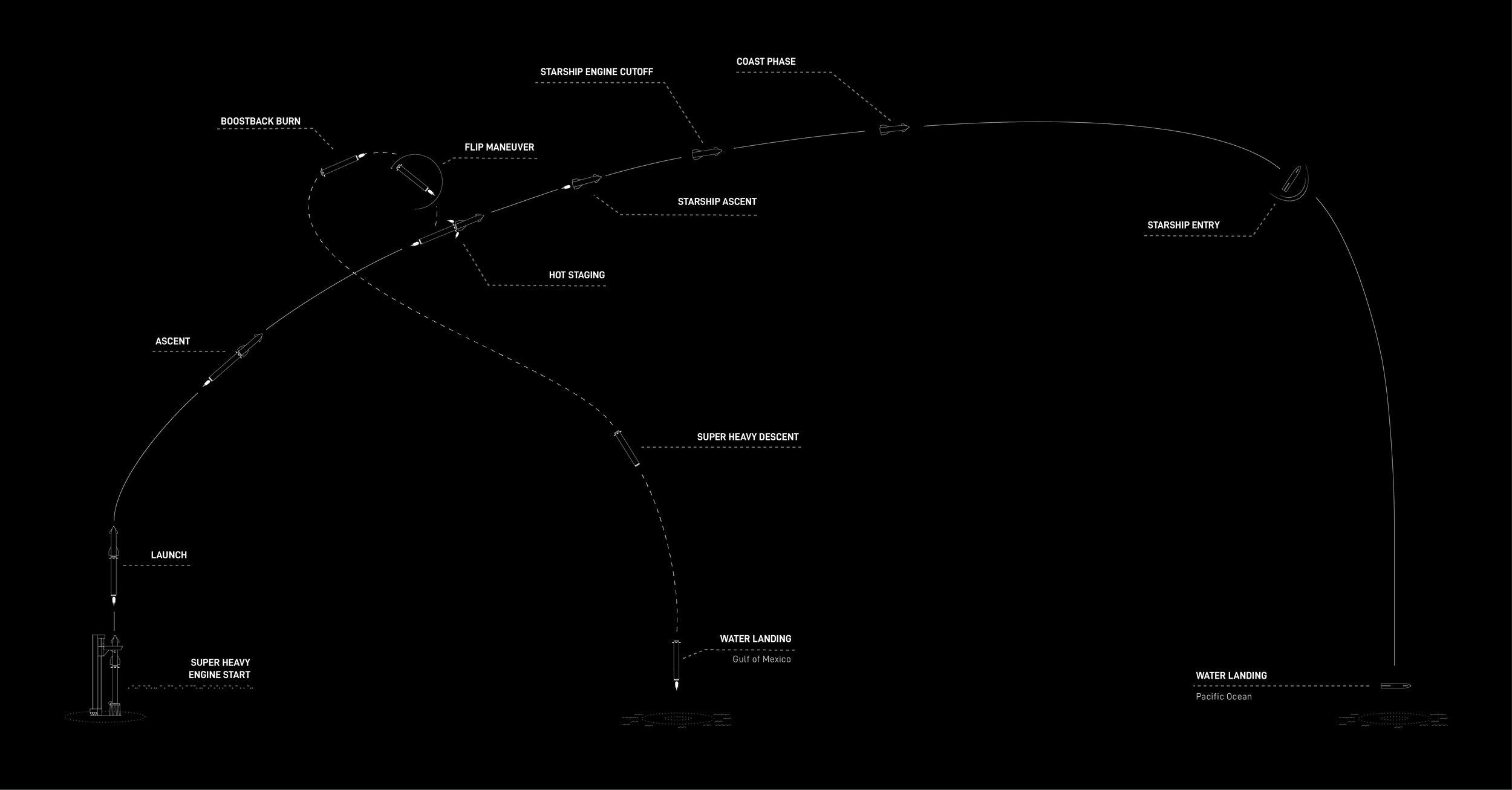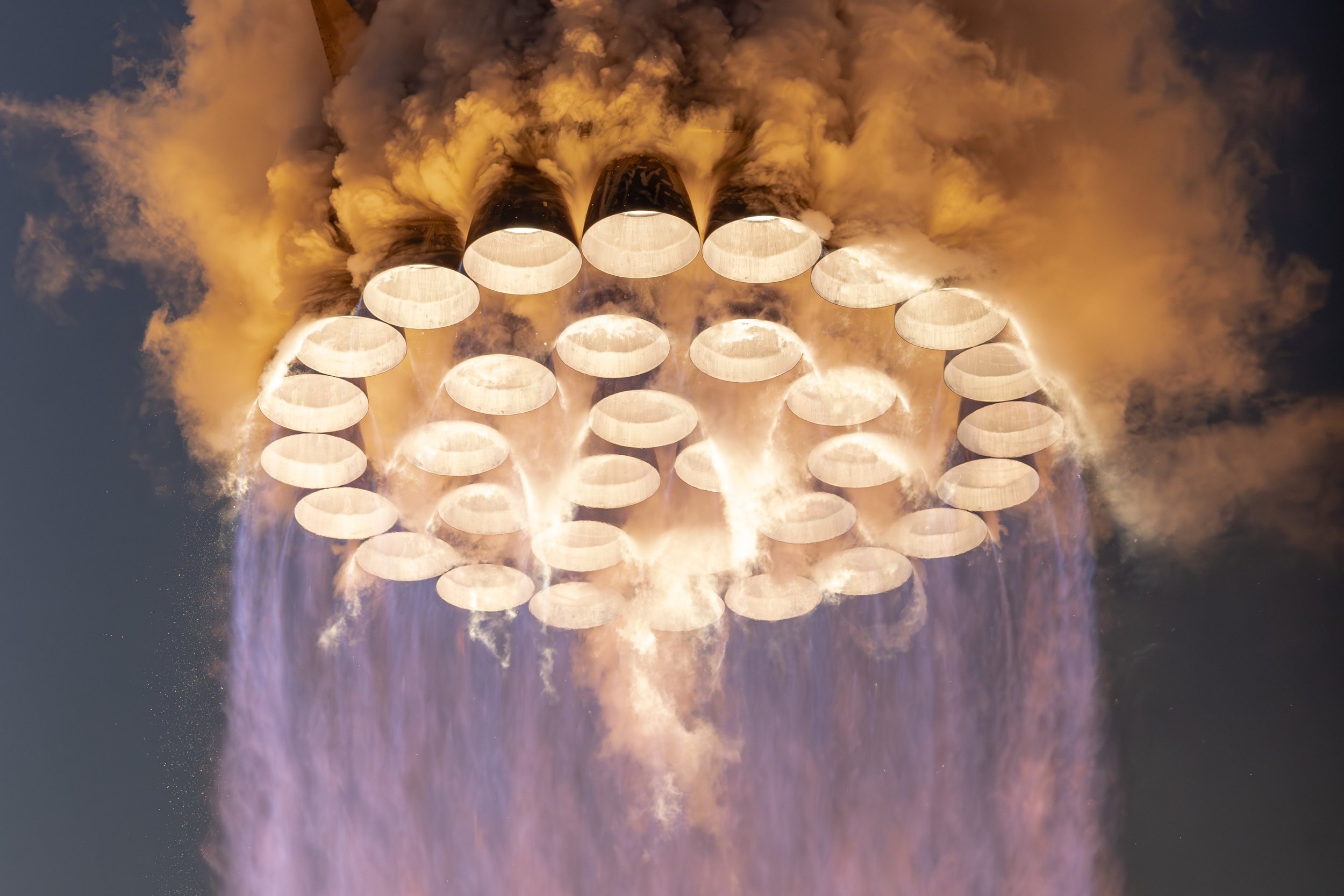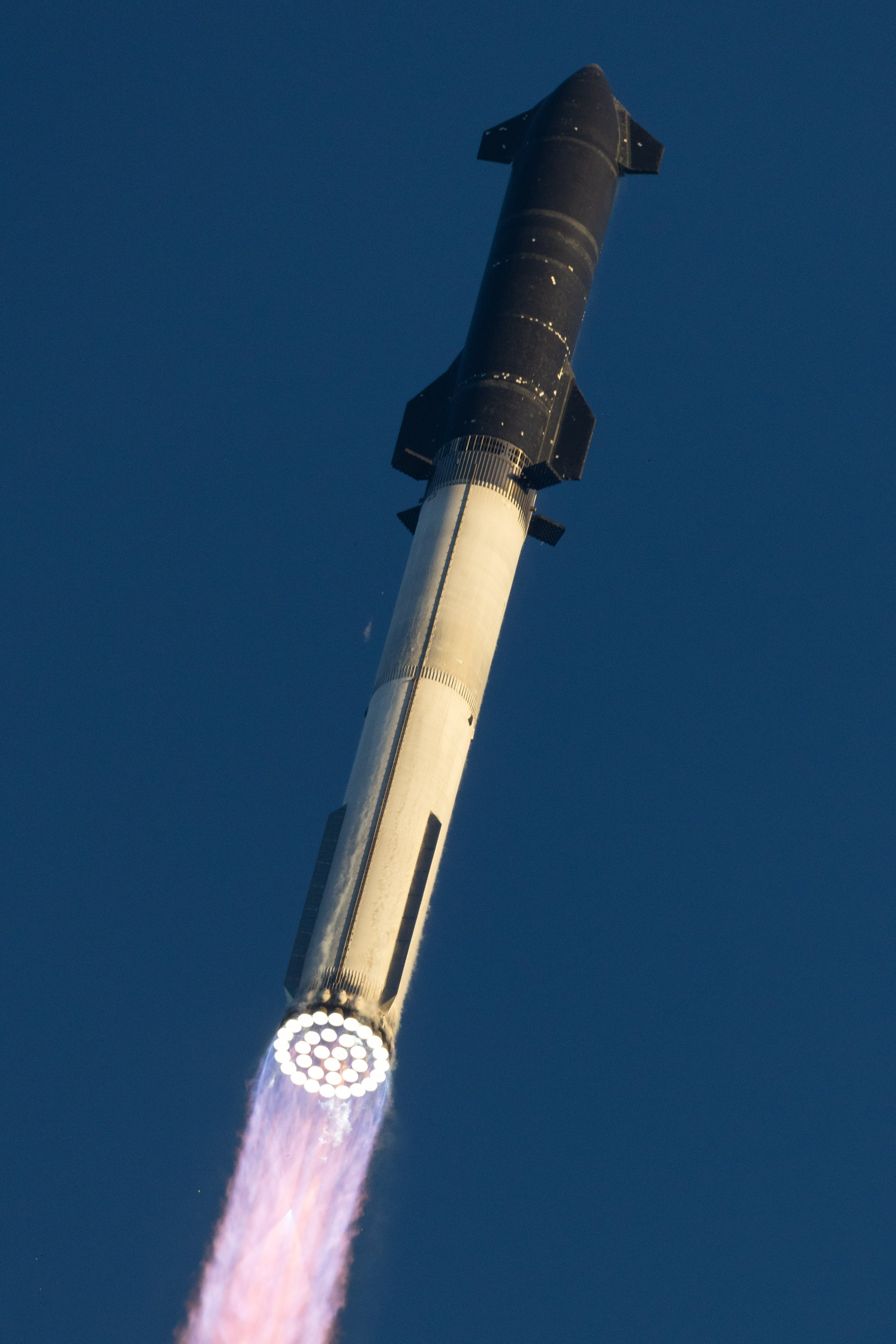Excitement guaranteed, again! Starship’s second fully integrated test flight - what happened
Starship - Ship 25 and Booster 9 - stacked for flight (Credit: SpaceX)
Seven months after Starship’s first integrated test flight ended with the flight termination system triggering a spectacular explosion not long after launch, it was time for Round 2 on Saturday 18th November 2023.
There have been 1,000 plus changes since the first integrated test flight, two being especially notable: the addition of a water deluge system to the orbital launch pad (which previously suffered serious damage during liftoff) and a hot-staging system which allows Starship to ignite its engines before the Super Heavy booster disconnects.
Rapid iterative development is the hallmark of SpaceX’s bold approach, providing numerous lessons learned that directly contribute to upgrades, as they work to build a fully reusable launch system capable of getting to Mars. Testing development flight hardware in a real flight environment is what enables the SpaceX teams to quickly learn and execute design changes. This recursive improvement strategy of test, learn, change adds to their promise of “Excitement guaranteed!” And we get to see these major steps in this most innovative of space vehicle development programs.
The initial Not-Earlier-Than date for launch was actually the day before, but problems with a grid fin actuator on the Super Heavy booster caused a 24-hour delay. Starship was unstacked, for the problem to be fixed, before Ship 25 was lifted and placed atop Booster 9 for the final time.
SpaceX produced this great, simple-to-understand, infographic for the planned flightpath:
Credit: SpaceX
In the UK, our team members were already eagerly watching as liquid oxygen and liquid methane - the fuel - began loading 1 hour 37 minutes before the expected lunchtime liftoff. (I’m currently working at our Komsberg Wilderness Nature Reserve in South Africa, two hours ahead.) Nearer to the launch, SpaceX’s live coverage started as expected. John Insprucker, the principal integration engineer who is always the person to listen to, mentioned that there was only one issue: small boats still in the exclusion zone. Thankfully, this potential show-stopper was quickly sorted. There was a brief hold at T-00.00.40 seconds - not entirely unexpected - before the final countdown to launch commenced.
Liftoff went smoothly, with all 33 Raptor engines aboard Super Heavy working well. The crucial point of danger, MaxQ, was reached and passed. Then all but three of Super Heavy’s engines shut down as scheduled, with Starship’s six engines igniting. The new hot-staging system appeared to work perfectly - and, this time, stage separation was successful. Super Heavy started its flip manoeuvre and boostback burn, but this bit wasn’t completely achieved and the booster suffered a dramatic RUD (Rapid Unscheduled Disassembly). Nevertheless, importantly, Starship carried on with a nominal trajectory, gradually reaching an altitude of 149km. Then, at approximately 7+ minutes into its flight, very close to the point of engine cutoff, something seemed to fail - and, at just over the 8-minute mark, the flight termination system appeared to be triggered, ending the flight.
Liftoff! (Credit: SpaceX)
Close-up of Super Heavy’s 33 Raptor engines (credit: SpaceX)
All 33 Raptor engines on Super Heavy working well (Credit: SpaceX)
It has to be emphasised that this was a test flight, with data collection of primary importance - and today was undoubtedly another successful step forward. All 33 + 6 Raptor engines initially worked well, a big improvement on the first test flight - and the new hot-staging system performed its task first time.
Congratulations to the SpaceX team!
Written by Cal Stewart, 18th November 2023
Update: SpaceX have now released a short “highlights” film of the test flight (below).




